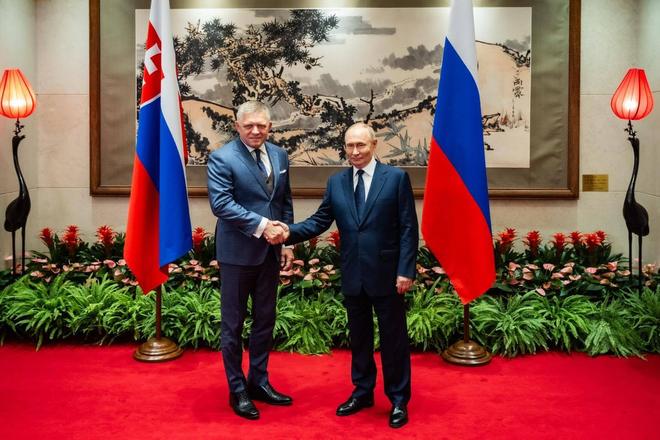Prime Minister Robert Fico has long insisted that Slovakia cannot survive without Russian gas, claiming it is cheaper than supplies from other sources. The reality, however, looks rather different.
Karel Hirman, a former economy minister who is now energy expert for the opposition party Demokrati, has highlighted what he calls a bizarre situation: the state-owned utility Slovenský Plynárenský Priemysel (SPP) is selling the same gas to Slovak households at an average of about €15 per megawatt-hour (MWh) more than in the Czech Republic.
Among Slovakia’s western neighbours, the household gas price currently stands at €56.5/MWh, while in Slovakia it is roughly €71.1/MWh, including distribution and other fees.
“In Kúty, SPP sells gas significantly more expensively than just a few kilometres away in Břeclav. For a family living in a detached house, this means an annual difference of around €200 to €350,” Hirman told a press conference in mid September.
According to him, this amounts to a large-scale gas “robbery,” from which selected people and companies linked to SPP and the government are likely profiting – at the expense of ordinary citizens.
Demokrati also labelled as "scandalous" the fact that while Fico’s government is asking the European Union for €450 million to reimburse a recently announced energy subsidy scheme that applies to virtually all Slovak households, the state-owned utility is at the same time charging Slovaks more than Czechs. This is despite the fact that prices in Slovakia are regulated, while in the neighbouring country they are set by the market.
How does gas price regulation work?
Experts argue that Slovakia’s gas price regulation system is set up very poorly. The key issue is that developments on the wholesale market are only reflected in regulated tariffs after a considerable delay.
For this year, the regulator ÚRSO set household gas prices based on a reference period starting more than two years earlier (October 2023 to June 2024). At that time, wholesale prices were higher than today’s market level of just under €33/MWh.
“From that reference period, the commodity price was set at €37.3/MWh. In reality, households are paying the government’s capped tariff, where the commodity is almost €10/MWh cheaper,” explained energy analyst Radovan Potočár.
However, a comparison of SPP’s current household price lists in Slovakia and the Czech Republic shows that although regulated and capped commodity prices are still lower in Slovakia, once distribution and other charges are added, the final bill turns out more favourable for Czech customers.
The commodity price (i.e. the gas itself) accounts for about 60 percent of the final household bill, with distribution, transmission, system operation fees and VAT added on top.
“The difference is compensated by the state for suppliers, which translates into a burden of hundreds of millions of euros annually for the public finances,” Potočár explained.
The situation looked very different when wholesale gas prices surged dramatically in the summer of 2022 – also as a consequence of Russia’s war in Ukraine – reaching more than €300/MWh.
At that time, regulated prices for Slovak households were fixed for the entire year of 2022. “The extreme market price hike only filtered through into regulated tariffs in 2023. That was the first time crisis regulation came into play, when the government introduced a price cap,” Potočár described the lengthy adjustment process.
He also pointed out that blaming only SPP for high prices is not entirely fair, even though it remains the dominant household supplier with about a two-thirds market share. Other players, such as ZSE Energia, VSE and SSE, behave in a similar way.


